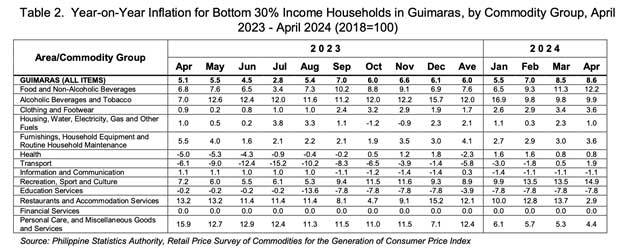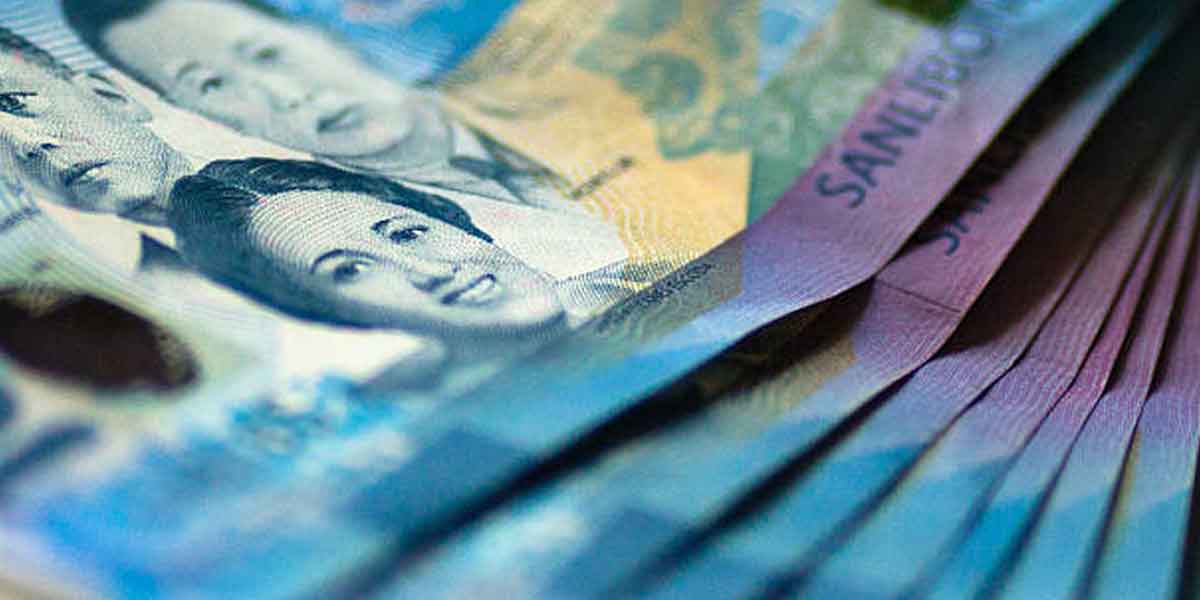
The heavily weighted food and non-alcoholic beverages sector, recording a 12.2 percent inflation rate in April 2024, drove Guimaras’ inflation for the bottom 30 percent income households to 8.6 percent from 8.5 percent in March 2024.
The number brought the provincial average inflation for low-income households from January to April 2024 to 7.4 percent, according to the latest statistics from the Philippine Statistics Authority (PSA).
The uptrend in inflation of food and non-alcoholic beverages was primarily influenced by a faster year-on-year increase in vegetables, tubers, plantains, cooking bananas, and pulses at 13.7 percent during the month, up from -2.2 percent in March 2024.
“Transport inflation rose to 1.9 percent from 0.5 percent in March 2024, and furnishings, household equipment and routine household maintenance increased to 3.6 percent from 3.0 percent, significantly impacting the bottom 30 percent income households’ inflation in April 2024,” said Provincial Statistics Officer Nelida B. Losare.

Losare explained that the price increase in transport was mainly driven by the fast-rising prices of fuels and lubricants for personal transport equipment to 3.2 percent from -0.2 percent inflation in March 2024. This category includes diesel, gasoline, liquid petroleum gas (LPG), natural gas (CNG, LNG), alcohol, biofuels (ethanol, methanol), methane, two-stroke mixtures, and lubricants.
Additionally, she noted that the fast-moving value of furnishings, household equipment, and routine household maintenance was attributed to non-durable household goods, which saw inflation increase to 3.5 percent in April 2024 from 3.0 percent a month earlier.
Food and non-alcoholic beverages, transport, and furnishings, household equipment, and routine household maintenance were the top three commodities that accounted for 84.0 percent, 10.8 percent, and 2.3 percent, respectively, in the low-income inflation trend in April 2024.
Other commodity groups that showed quicker inflation rates included recreation, sport, and culture, rising to 14.9 percent from 13.5 percent; clothing and footwear, which increased to 3.6 percent from 3.4 percent; and alcoholic beverages and tobacco, rising to 9.9 percent from 9.8 percent.
In contrast, commodity groups such as housing, water, electricity, gas, and other fuels showed a decrease in inflation to 1.0 percent from 2.3 percent; restaurants and accommodation services dropped to 2.9 percent from 13.7 percent; and personal care and miscellaneous goods and services decreased to 4.4 percent from 5.3 percent.
Moreover, the sectors of health, information and communication, education, and financial services retained their previous month’s annual rates.

Losare further noted that the bottom 30 percent income households in Guimaras posted a Consumer Price Index (CPI) of 133.3, indicating that a typical low-income Guimarasnón household needed 1,333 pesos in April 2024 to purchase a basket of goods and services worth 1,000 pesos in 2018. This value is lower than the 134.1 CPI in March 2024 and higher than the 122.8 CPI in April 2023.
Losare also highlighted that based on the relative poverty concept, households whose per capita income falls below the bottom 30 percent of the cumulative per capita distribution belong to the low-income group. “The inflation rate for the bottom 30 percent of income households, who are particularly susceptible to economic and social challenges, was calculated to monitor their well-being,” Losare said.




















